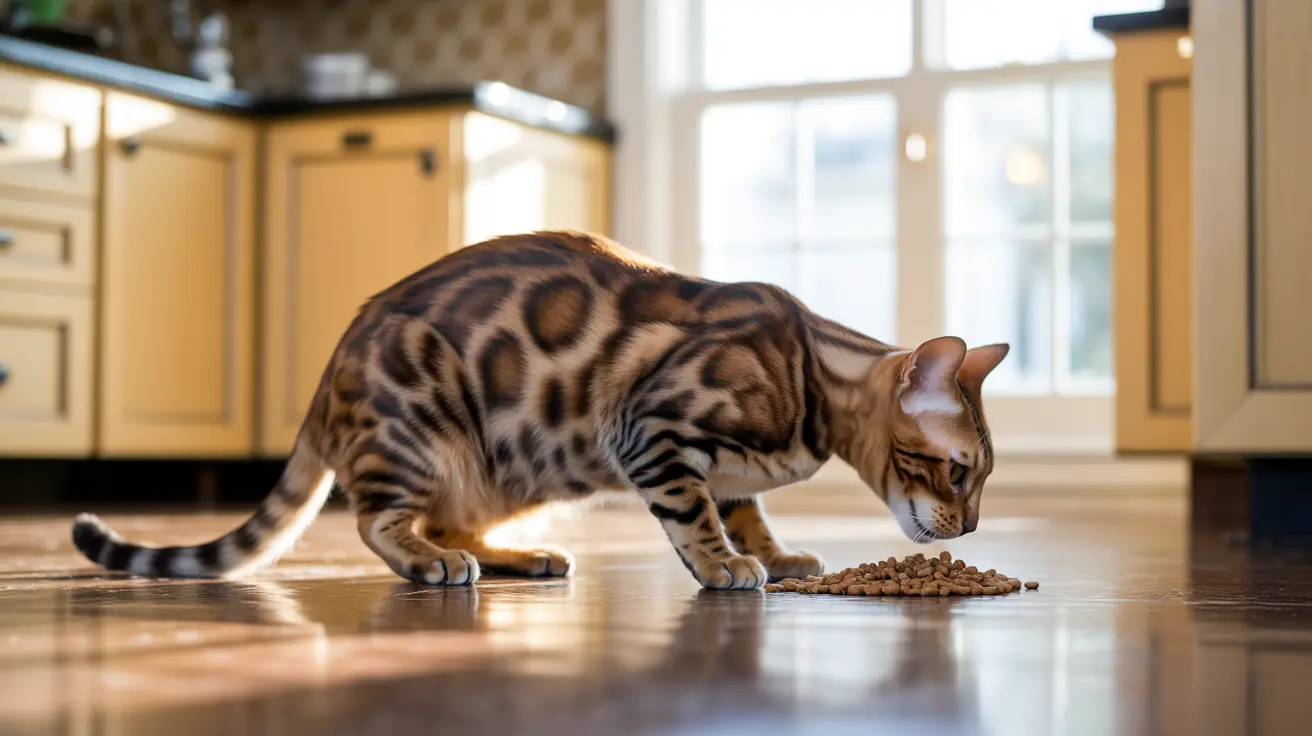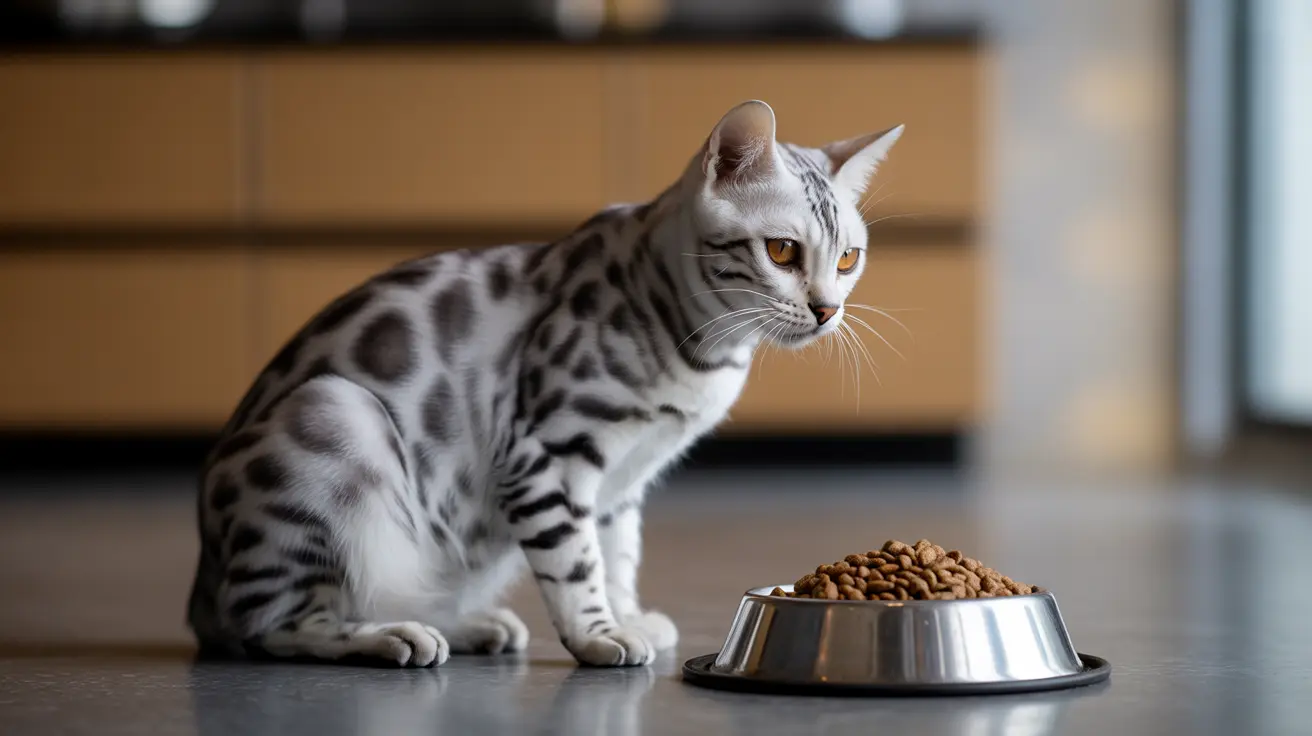Why Do Cats Scratch Around Their Food Bowl: Understanding Your Feline's Ancient Instincts
Have you ever watched your cat perform an elaborate scratching ritual around their food bowl, pawing at the floor or trying to cover their kibble with imaginary dirt? This puzzling behavior leaves many cat owners scratching their heads, wondering if something is wrong with their feline friend. The truth is, this scratching behavior is deeply rooted in your cat's DNA and reflects ancient survival instincts that have been passed down through generations of wild ancestors.
Understanding why cats scratch around their food bowl isn't just about satisfying curiosity—it's about gaining valuable insights into your pet's natural behaviors and ensuring their feeding environment meets their instinctual needs. From territorial marking to food preservation instincts, these scratching behaviors serve multiple purposes that made perfect sense in the wild, even if they seem peculiar in your modern kitchen.
In this comprehensive guide, we'll explore the fascinating reasons behind this behavior, help you distinguish between normal instinctive scratching and potential concerns, and provide practical solutions to manage these behaviors while respecting your cat's natural instincts.
The Ancient Instinct: Food Caching and Survival
The primary reason cats scratch around their food bowl stems from an ancient survival mechanism called food caching. In the wild, cats bury remains of prey and cover food sources to mask their scent and avoid attracting predators or rival animals. This instinctive behavior, inherited from their wild ancestors, helped feral cats protect themselves and their food from scavengers and competitors.
Many feral cats continue to practice food caching by burying food and waste to maintain hygiene and security. Female cats nursing kittens are particularly diligent about burying food to prevent other cats from locating their vulnerable litter. This protective instinct runs so deep that even well-fed domestic cats living in safe homes continue to exhibit these behaviors around their food bowls.
Wild cats like leopards demonstrate sophisticated food caching by storing kills in secure locations away from competitors. North American bobcats cover their kills with debris to hide them from rival animals. Your domestic cat is essentially mimicking these same survival strategies when they scratch under or around their food bowls, sometimes even attempting to cover their food with paper, fabric, or other available materials.
Territorial Marking Through Scent Communication
Another significant reason cats scratch around their food bowl relates to territorial marking through scent communication. Cats have specialized scent glands located in their paw pads that release pheromones when they scratch or knead surfaces. This scratching behavior serves as a way to mark their territory and communicate ownership to other cats in the household or neighborhood.
When your cat scratches around their food area, they're essentially leaving a chemical signature that says "this is mine" to any other cats who might encounter the space. This territorial marking becomes even more pronounced in multi-cat households, where competition for resources can trigger stronger scratching behaviors around feeding areas.
The scent-marking aspect of scratching explains why some cats become more insistent about this behavior when new pets are introduced to the home or when they sense unfamiliar animal scents from outside. It's their way of reinforcing their claim to their food source and feeding territory.
Food Rejection and Dissatisfaction Signals
Sometimes, scratching around the food bowl indicates that your cat is trying to "bury" their food because they find it unsatisfactory. Just as cats bury waste in their litter box to maintain cleanliness, they may attempt to bury food they dislike due to its taste, texture, temperature, or smell. This behavior essentially treats unwanted food the same way they would treat waste material.
Cats have highly sensitive palates and specific preferences when it comes to food temperature, freshness, and texture. If the food is too cold, stale, or has an off-putting odor, your cat may scratch around the bowl in an attempt to "dispose of" the unacceptable meal. This scratching can be particularly pronounced with wet food that has been sitting out too long or dry food that has lost its freshness.
Understanding this aspect of scratching behavior can help you identify when your cat is genuinely rejecting their food versus simply following instinctual patterns. Food rejection scratching typically occurs more immediately after the cat approaches the bowl and may be accompanied by walking away from the food without eating.
Stress, Anxiety, and Environmental Factors
Stress and environmental changes can significantly influence scratching behavior around food bowls. Cats are creatures of habit who thrive on routine and security. When their environment changes or they feel anxious, they may increase their scratching behaviors as a way to self-soothe and create familiarity through scent marking.
Common stress triggers that can intensify food bowl scratching include moving to a new home, changes in household routine, introduction of new pets or family members, construction noise, or even rearranging furniture. During these times, the scratching serves as both a comfort mechanism and a way to reinforce their sense of security around their feeding area.
If your cat's scratching behavior around the food bowl has suddenly increased or is accompanied by other symptoms like changes in appetite, hiding, excessive grooming, or vocalization, it may indicate underlying stress that requires attention to environmental factors or potentially veterinary consultation.
Contentment, Playfulness, and Boredom
Not all scratching around food bowls stems from survival instincts or stress—sometimes it's simply a sign of contentment or playful behavior. Kneading the floor around their food bowl can indicate that your cat is happy and anticipating their meal. This kneading behavior, where cats alternately press their paws against surfaces, is a social behavior learned during kittenhood and often signals comfort and satisfaction.
Boredom can also contribute to increased scratching behaviors around feeding areas. Indoor cats with limited environmental stimulation may turn their natural scratching instincts toward their food area as a form of entertainment or mental engagement. This type of scratching tends to be more elaborate and prolonged, often involving dragging objects or extensive pawing motions.
Playful scratching differs from stress-related or instinctual scratching in its timing and body language. Cats exhibiting playful behavior typically appear relaxed, may vocalize happily, and often incorporate other play behaviors like pouncing or batting at imaginary objects around their food area.
Creating an Optimal Feeding Environment
Understanding your cat's scratching behavior allows you to create a feeding environment that honors their natural instincts while minimizing disruption to your household. The key is working with these behaviors rather than against them, since punishing natural instincts can worsen problems and harm your bond with your cat.
To reduce problematic scratching while respecting your cat's instincts, consider placing food bowls on hard surfaces away from items that could be damaged by scratching. Supervising feeding times and removing uneaten wet food promptly can prevent extended scratching sessions and maintain food freshness. When you notice your cat beginning to scratch excessively, gently redirecting their attention with interactive toys can satisfy their need for stimulation while protecting your floors.
Avoid offering free-choice dry food feeding, as constant access to food tends to encourage more scratching behavior. Instead, establish regular meal times that provide structure and reduce the opportunity for extended scratching sessions. This approach also allows you to monitor your cat's food intake more closely and notice any changes in appetite or behavior.
Managing Multi-Cat Household Dynamics
In households with multiple cats, scratching around food bowls often intensifies due to territorial competition and resource guarding. Each cat may feel compelled to mark their feeding area more assertively to establish ownership and communicate their presence to other cats. This can lead to more frequent and elaborate scratching behaviors during meal times.
To manage scratching in multi-cat environments, provide separate feeding stations for each cat, preferably in different areas of the home. This reduces competition and allows each cat to scratch and mark their individual territory without interference. Ensure adequate spacing between feeding areas to prevent cats from feeling threatened while eating.
Monitor feeding interactions between cats to identify any bullying or food guarding behaviors that might be triggering excessive scratching. Some cats may scratch more vigorously when they feel their food source is threatened by other household cats, requiring intervention to create a more secure feeding environment.
When to Seek Professional Help
While scratching around food bowls is typically normal behavior, certain circumstances warrant veterinary consultation or professional behavioral guidance. If the scratching behavior is new, has suddenly increased in intensity, or is accompanied by other symptoms like vomiting, weight loss, changes in appetite, or unusual behavioral changes, these could indicate underlying medical issues.
Medical conditions such as food allergies, inflammatory bowel disease, dental problems, or stress-related disorders can manifest through changes in feeding behavior, including increased scratching around food bowls. A veterinary examination can help rule out physical causes and ensure your cat's health isn't compromised.
Additionally, if scratching behaviors become destructive to your home or interfere significantly with your cat's eating routine, consulting with a certified cat behaviorist can provide tailored strategies for management while preserving your cat's well-being and your relationship with them.
Frequently Asked Questions
Q: Is it normal for cats to scratch around their water bowl too?
Yes, cats may scratch around water bowls for similar reasons as food bowls. They may be marking territory, following instinctual behaviors related to finding and securing water sources, or expressing dissatisfaction with the water's temperature, freshness, or location.
Q: Should I stop my cat from scratching around their food bowl?
Generally, you shouldn't try to stop this natural behavior entirely, as it can cause stress and harm your relationship with your cat. Instead, focus on managing the behavior by providing appropriate surfaces, redirecting excessive scratching with toys, and ensuring your cat's feeding environment meets their needs.
Q: Why does my cat scratch more around wet food than dry food?
Wet food has a stronger scent than dry food, which may trigger more intense instinctual responses related to food caching and scent masking. Additionally, wet food that sits out too long may develop odors that your cat finds unacceptable, prompting burial behaviors.
Q: Can the type of food bowl affect scratching behavior?
Yes, bowl material, size, and placement can influence scratching behavior. Some cats prefer certain textures or may scratch more on specific surfaces. Placing bowls on hard surfaces rather than carpet can reduce the satisfaction cats get from scratching, potentially minimizing the behavior.
Q: Do indoor cats scratch around food bowls more than outdoor cats?
Indoor cats may actually exhibit more elaborate scratching behaviors because they have fewer opportunities to express natural hunting and territorial behaviors. Outdoor cats can practice these instincts in broader contexts, while indoor cats may concentrate these behaviors around their primary resource areas.
Q: How can I tell if my cat's scratching is due to stress versus natural instinct?
Stress-related scratching often appears suddenly, increases in intensity, and may be accompanied by other behavioral changes like hiding, changes in appetite, excessive grooming, or vocalization. Natural instinctual scratching tends to be consistent and routine, occurring primarily around meal times without other concerning symptoms.
Q: Will neutering or spaying affect scratching behavior around food bowls?
Neutering can reduce some territorial marking behaviors, including urine spraying, but it typically doesn't eliminate instinctual scratching around food bowls since these behaviors are primarily related to food caching instincts rather than sexual territorial marking.
Conclusion
Understanding why cats scratch around their food bowl reveals the fascinating complexity of feline behavior and the powerful influence of evolutionary instincts on modern pet behavior. Whether your cat is practicing ancient food caching techniques, marking territory through scent communication, expressing food preferences, or simply displaying contentment, these behaviors serve important psychological and social functions that deserve respect and understanding.
By recognizing the various reasons behind this behavior—from survival instincts and territorial marking to stress responses and playfulness—you can create a feeding environment that honors your cat's natural needs while maintaining harmony in your home. Remember that these scratching behaviors are normal expressions of your cat's instinctual programming, not problems to be eliminated, but rather communications to be understood and appropriately managed.






